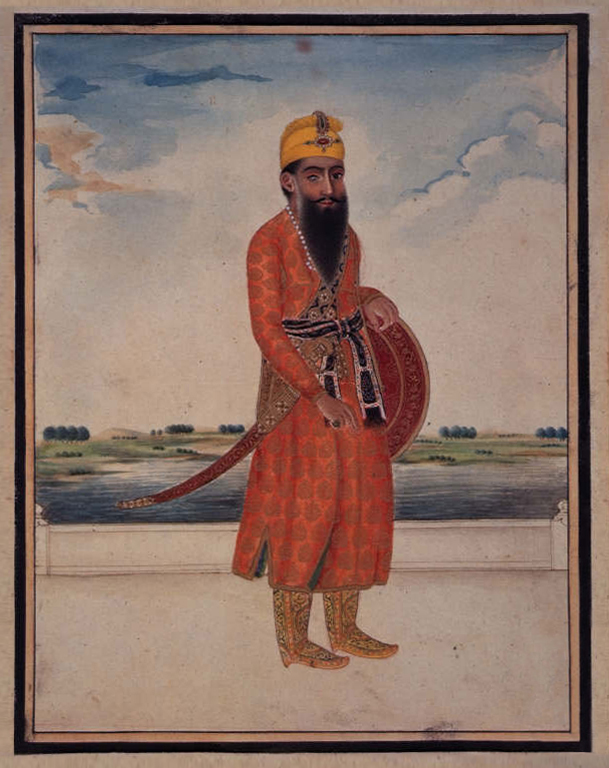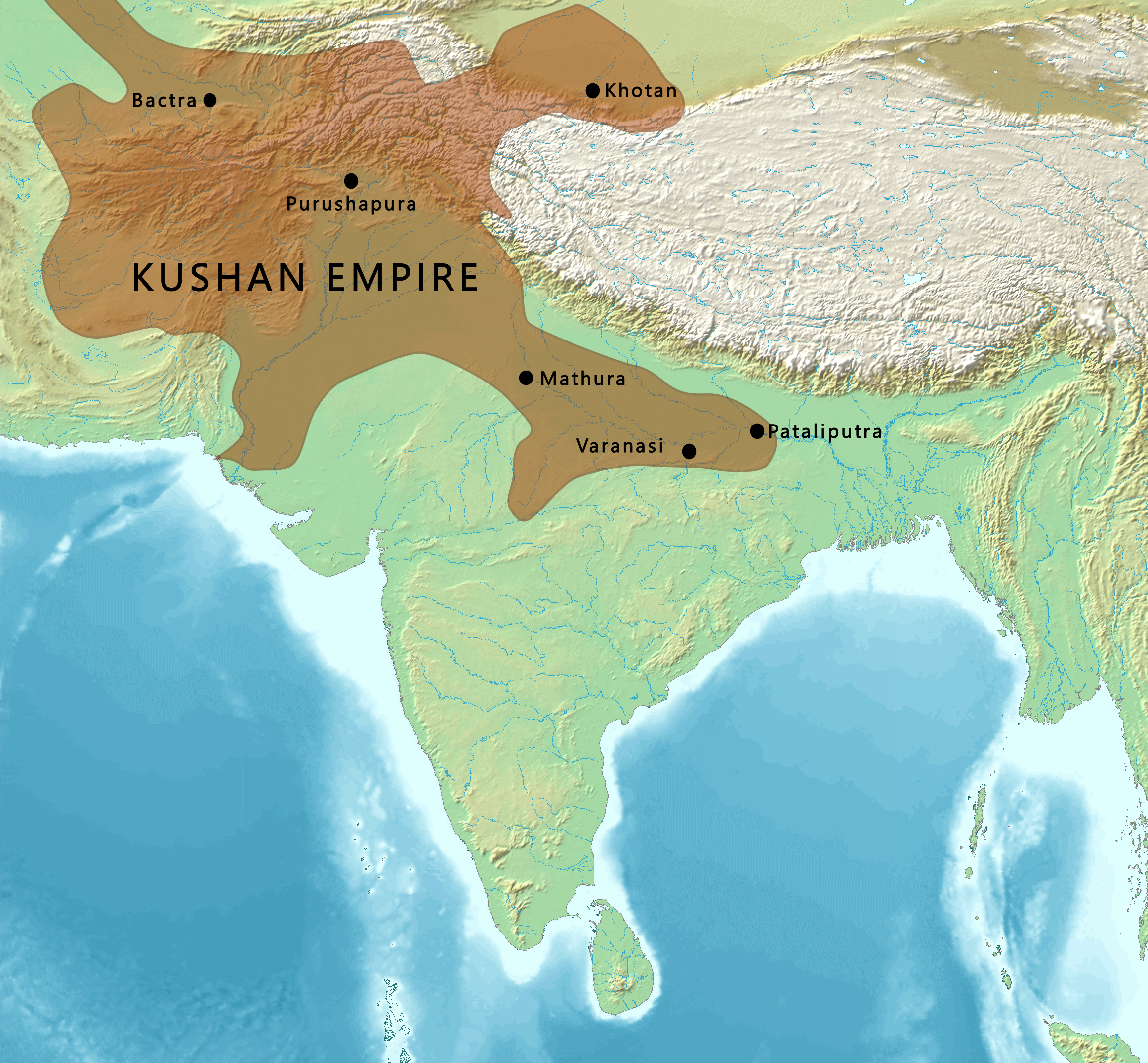|
1833–1834 Expedition Of Shah Shujah Durrani
Beginning in January 1833, Shah Shujah Durrani, the deposed Afghan emperor, led an expedition to re-claim his throne. Raising a force while in exile in the Sikh Empire, he marched through Sindh to Kandahar, besieging it from 10 May 1834 until 1 July 1834. Shah Shujah would be defeated by the Barakzai rulers of Kandahar and Kabul. Background Following the death of Timur Shah Durrani, the Durrani Empire was plunged into a succession crisis with Timur Shah's 24 sons. Prominent sons of these would be Mahmud Shah Durrani, Zaman Shah Durrani, and Shah Shujah Durrani. Zaman Shah Durrani would take the throne after the death of Timur Shah in a succession crisis, where Mahmud Shah Durrani was confined to ruling the Realm of Herat, while Shah Shujah would work for Zaman Shah ordinated at Peshawar. Mahmud Shah would be forced to flee to Persia after Zaman Shah would invade Herat. Mahmud Shah would return on multiple attempts to seize the throne from his brother, finally succeeding in 180 ... [...More Info...] [...Related Items...] OR: [Wikipedia] [Google] [Baidu] |
Kandahar
Kandahar is a city in Afghanistan, located in the south of the country on Arghandab River, at an elevation of . It is Afghanistan's second largest city, after Kabul, with a population of about 614,118 in 2015. It is the capital of Kandahar Province and the centre of the larger cultural region called Loy Kandahar. The region around Kandahar is one of the oldest known areas of human settlement. A major fortified city existed at the site of Kandahar, probably as early as 1000–750 BC,F.R. Allchin (ed.)''The Archaeology of Early Historic South Asia: The Emergence of Cities and States'' (Cambridge University Press, 1995), pp.127–130 and it became an important outpost of the Achaemenid Empire in the 6th century BC.Gérard Fussman"Kandahar II. Pre-Islamic Monuments and Remains", in ''Encyclopædia Iranica'', online edition, 2012 Alexander the Great laid the foundation of what is now Old Kandahar (in the southern section of the city) in the 4th century BC and named it Alexandria ... [...More Info...] [...Related Items...] OR: [Wikipedia] [Google] [Baidu] |
Succession Crisis
A succession crisis is a crisis that arises when an order of succession fails, for example when a monarch dies without an indisputable heir. It may result in a war of succession. Examples include (see List of wars of succession): * The Wars of The Roses *Multiple periods during the history of the Roman Empire: ** Year of the Four Emperors (69 AD) **Year of the Five Emperors (193 AD) ** Year of the Six Emperors (238 AD) * Bolesław I's intervention in the Kievan succession crisis * 1383–1385 Crisis, the 1383–1385 succession crisis over the throne of Portugal * Portuguese succession crisis of 1580, the 1580 succession crisis over the throne of Portugal *1558–1559, English succession crisis after the death of Mary I of England *1598 Times of Troubles in Russia *The succession of Henry IV of France, which provoked persistent Catholic resistance with Spanish support and led to war with Spain in 1595 *War of the Spanish Succession The War of the Spanish Succession was a ... [...More Info...] [...Related Items...] OR: [Wikipedia] [Google] [Baidu] |
Lahore
Lahore ( ; ; ) is the capital and largest city of the Administrative units of Pakistan, Pakistani province of Punjab, Pakistan, Punjab. It is the List of cities in Pakistan by population, second-largest city in Pakistan, after Karachi, and 27th List of largest cities, largest in the world, with a population of over 14 million. Lahore is one of Pakistan's major industrial, educational and economic hubs. It has been the historic capital and cultural center of the wider Punjab region, and is one of Pakistan's most Social liberalism, socially liberal, Progressivism, progressive, and Cosmopolitanism, cosmopolitan cities. Origins of Lahore, Lahore's origin dates back to antiquity. The city has been inhabited for around two millennia, although it rose to prominence in the late 10th century with the establishment of the Walled City of Lahore, Walled City, its fortified interior. Lahore served as the capital of several empires during the medieval era, including the Hindu Shahis, Gha ... [...More Info...] [...Related Items...] OR: [Wikipedia] [Google] [Baidu] |
Ranjit Singh
Ranjit Singh (13 November 1780 – 27 June 1839) was the founder and first maharaja of the Sikh Empire, in the northwest Indian subcontinent, ruling from 1801 until his death in 1839. Born to Maha Singh, the leader of the Sukerchakia Misl, Ranjit Singh survived smallpox in infancy but lost sight in his left eye. At the age of ten years old, he fought his first battle alongside his father. After his father died around Ranjit's early teenage years, he became leader of the Misl. Ranjit was the most prominent of the Sikh leaders who opposed Zaman Shah, the ruler of Durrani Empire, during his third invasion. After Zaman Shah's retreat in 1799, he captured Lahore from the Sikh triumvirate which had been ruling it since 1765. At the age of 21, he was formally crowned at Lahore. Before his rise, the Punjab had been fragmented into a number of warring Sikh (known as misls), Muslim and Hindu states. A large part of Punjab was under direct Durrani control. By 1813, Ranjit Sin ... [...More Info...] [...Related Items...] OR: [Wikipedia] [Google] [Baidu] |
Bolan Pass
Bolan Pass () is a valley and a natural gateway through the Toba Kakar range in Balochistan province of Pakistan. It is situated south of Pakistan's border with Afghanistan. The pass is an stretch of the Bolan River valley from Rindli in the south to Darwāza near Kolpur in the north. It is made up of a number of narrow gorges and stretches.Bolān Pass ''Encyclopædia Britannica'' 4 October 2014. It connects with by road and railway. Being strategically located, it has also been used by traders, invaders, and nomadic tribes as a gateway to and from South Asia. The Bolān Pass is an important pass on the ... [...More Info...] [...Related Items...] OR: [Wikipedia] [Google] [Baidu] |
Battle Of Nimla (1809)
The Battle of Nimla took place on 29 June 1809, due to a conflict between Mahmud Shah Durrani and Shah Shuja Durrani over the Succession crisis, succession for the Afghan Durrani Empire, Durrani throne. The battle resulted in a victory for Mahmud Shah and allowed him to secure the throne, where he reigned from 1809 to 1818. This was his second reign before he was deposed. At the beginning of the conflict, Shah Shuja Durrani, Shah Shuja had managed to depose Mahmud Shah Durrani, Mahmud Shah in the wake of a greater conflict that had spilled over after the death of Timur Shah Durrani, leading to a succession crisis where Mahmud Shah would eventually take rule, and be deposed by Shah Shuja, as a result, Mahmud Shah had returned in 1809 and had occupied Kabul, Shah Shuja had rallied his forces near Jalalabad to meet Shah Mahmud in battle near Nimla. Background Following the death of Timur Shah Durrani, the Durrani Empire was plunged into a succession crisis with Timur Shah's 24 sons. ... [...More Info...] [...Related Items...] OR: [Wikipedia] [Google] [Baidu] |
Kashmir
Kashmir ( or ) is the Northwestern Indian subcontinent, northernmost geographical region of the Indian subcontinent. Until the mid-19th century, the term ''Kashmir'' denoted only the Kashmir Valley between the Great Himalayas and the Pir Panjal Range. The term has since also come to encompass a larger area that includes the Indian-administered territories of Jammu and Kashmir (union territory), Jammu and Kashmir and Ladakh, the Pakistani-administered territories of Azad Kashmir and Gilgit-Baltistan, and the Chinese-administered territories of Aksai Chin and the Trans-Karakoram Tract. Quote: "Kashmir, region of the northwestern Indian subcontinent. It is bounded by the Uygur Autonomous Region of Xinjiang to the northeast and the Tibet Autonomous Region to the east (both parts of China), by the Indian states of Himachal Pradesh and Punjab to the south, by Pakistan to the west, and by Afghanistan to the northwest. The northern and western portions are administered by Pakistan a ... [...More Info...] [...Related Items...] OR: [Wikipedia] [Google] [Baidu] |
Jalalabad
Jalalabad (; Help:IPA/Persian, [d͡ʒä.lɑː.lɑː.bɑːd̪]) is the list of cities in Afghanistan, fifth-largest city of Afghanistan. It has a population of about 200,331, and serves as the capital of Nangarhar Province in the eastern part of the country, about from the capital Kabul. Jalalabad is located at the junction of the Kabul River and the Kunar River in a plateau to the south of the Hindu Kush mountains. It is linked by the Kabul-Jalalabad Road to the west and Peshawar in Khyber Pakhtunkhwa, Pakistan, to the east through Torkham border crossing, Torkham and the Khyber Pass. Jalalabad is a leading center of social and trade activity because of its proximity with the Torkham border checkpoint and border crossing, away. Major industries include papermaking, as well as agricultural products including oranges, lemon, rice, and sugarcane, helped by its warm climate. It hosts Afghanistan's second largest educational institute, Nangarhar University. For centuries the city ... [...More Info...] [...Related Items...] OR: [Wikipedia] [Google] [Baidu] |
Kabul
Kabul is the capital and largest city of Afghanistan. Located in the eastern half of the country, it is also a municipality, forming part of the Kabul Province. The city is divided for administration into #Districts, 22 municipal districts. A 2025 estimate puts the city's population at 7.175 million. In contemporary times, Kabul has served as Afghanistan's political, cultural and economical center. Rapid urbanisation has made it the country's primate city and one of the largest cities in the world. The modern-day city of Kabul is located high in a narrow valley in the Hindu Kush mountain range, and is bounded by the Kabul River. At an elevation of , it is one of the List of capital cities by elevation, highest capital cities in the world. The center of the city contains its old neighborhoods, including the areas of Khashti Bridge, Khabgah, Kahforoshi, Saraji, Chandavel, Shorbazar, Deh-Afghanan and Ghaderdiwane. Kabul is said to be over 3,500 years old, and was mentioned at the ... [...More Info...] [...Related Items...] OR: [Wikipedia] [Google] [Baidu] |







